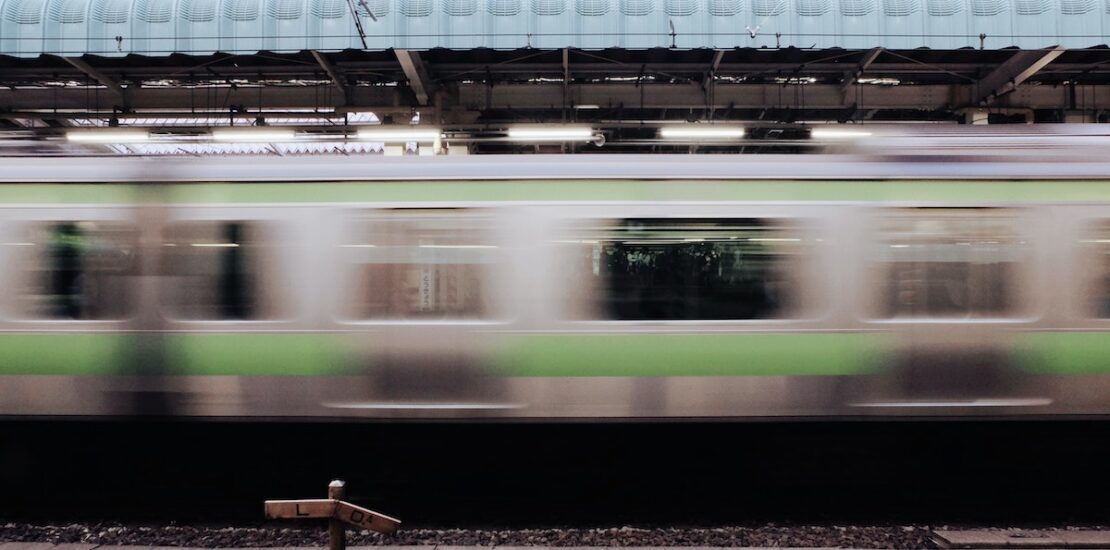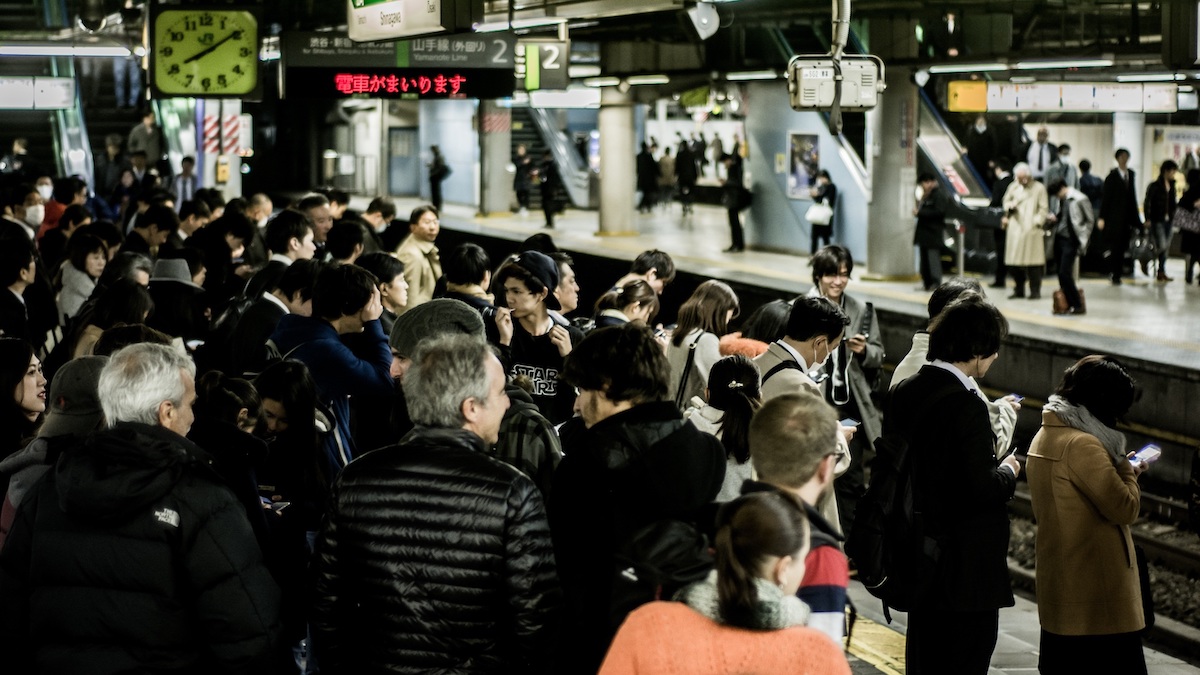Love it or hate it, the Yamanote Line is arguably the most important train line in Tokyo, both culturally, historically, and geographically.

I decided to move to Tokyo despite hating crowdedness. Actually, during my first trip to Japan that spanned over 4 months and many cities and prefectures, I had concluded by the end of it that Tokyo was my least favourite city. But, there is something to be said about the romance of living in the biggest city in the world, and so I went for it.
That romance quickly disappeared the first time I was squished into a train during rush hour. I remember it being a quick stop – Ebisu to Shibuya. I contemplated walking it since it was only about 15 minutes or so, but the ride was 3 min and I was tired that day. Well, after tapping into the station, I realized I had made a huge mistake. The size of the crowd waiting at the platform is just something I can’t even put into words. It was a scene straight out of a zombie movie. Hordes of people flowing in and out with no real sense of direction. I felt like I was in a wave pool.
Every time the platform would clear out just enough to give you hope that you could board the next train, more people would suddenly appear as if out of thin air. The 3 min journey turned into a 20 minute one as I struggled to assert myself in the crowd. Amidst the confusion, I couldn’t even handle making the decision of leaving the station and walking instead as I would definitely be late meeting my friend if I walked, whereas there was still hope of making it on time if I managed to board a train. From then on, I promised myself that if it was possible, I would avoid the Yamanote Line.

This is, of course, an impossible task as the Yamanote Line is located in central Tokyo. With 30 train stations in total, most of which are recognized only by name even by non-Tokyoites, it’s safe to say that this is the most important train line in Tokyo.
Quick Facts:
- The line was constructed in 1885 (another quick fact, the first Japanese person arrived in Hawaii in 1885)
- The line runs in a loop, with one side running clockwise, and the other running counter-clockwise
- The line spans 34.5 km taking 59-65 minutes to complete one loop
- Shinagawa station is the official start point
- The average wait time for a departure is between 2-4 minutes
- The line was only completed as a full loop in 1925
- There are no express trains. Every train stops at every station
Slow Facts:
- “Yamanote” (山の手) directly translates to mountain’s hand, but the “no” is actually omitted in the official kanji, making it only 山手. For a while, the people of Tokyo actually referred to it as Yamate as well when they began installing romanized names in the stations. The Japanese National Railway eventually settled on Yamanote in 1971
- Shinagawa station was the first station constructed on the Yamanote Line, but it was actually constructed in 1872 before the line went into operation. During that time, service ran between Shinagawa to Yokohama, though unofficially. The official inauguration of this service as Japan’s “first railway” came a few months later. When the Yamanote Line began running, they constructed another station opposite of Shinagawa station and named it Takanawa station. They eventually renamed it to Shinagawa station and the original Shinagawa station was removed
- You may be wondering why Takanawa sounds familiar. Well, Takanawa Gateway is the newest addition to the Yamanote Line, and was slated to be open just in time for Tokyo Olympics 2020
- As an additional slow fact for this slow fact, the name was highly criticized for the use of katakana loanwords to sound cool and modern. One meme in particular resulted in a reimagined Yamanote Line where existing stations were renamed in a similar fashion. Some that made me chuckle include “Shimbashi Salaryman Sanctuary“, “Yurakucho Almost Ginza”, and “Tabata Nothing”
- Yamanote was originally known as one half of a socially divided Tokyo, the other half being called Shitamachi (translated as “lowtown”). As indicated by the name, the Yamanote area was located in the hillier north side of town, while Shitamachi occupied the southern side. Though somewhat geographically fuzzy (for Yamanote, think more west; for Shitamachi, think more east), Yamanote referred to the affluent and upper-classman, while Shitamachi referred to the merchant-type lower-classman. Today, this former caste system can still be seen clearly reflected in the modern and contemporary west such as Shinjuku and Shibuya, and in the traditional Edo-era east such as Asakusa and Ueno
Fun Non-Facts
- Getting really drunk and falling asleep on the Yamanote Line while constantly missing your stop is almost a rite of passage for anyone that moved to Tokyo. I never lived anywhere close to the line and my friends didn’t really hang out near the line, so I haven’t experienced it myself yet, but it’s something I somewhat look forward to as I would love to have my own personal drunk Yamanote story. The stories often go as follows:
- You fall asleep and wake up, and realize you’ve gone past your station. If you’re less than half the loop past your intended stop, you’ll probably get off at the next stop, hop across the platform, and get on the train that goes in the other direction. You try your damndest to not fall asleep but the seats are too warm and soft, and so you fall asleep and wake up and realize you’ve gone past your station again. This repeats. Or, you wake up and realize you’ve gone past half the loop, so you try your damndest not to fall asleep and wait until you eventually circle back to your intended station. You fall asleep, wake up, and realize you’ve gone past your station again
- I’ve had friends literally stuck on this endless purgatory for hours after waiting all night to take the first train. Some have entered the train station around 5am only to finally reach home around 10am
- The Yamanote Line game is a popular drinking game. The original concept is to go around in a circle, and clap in a rhythm while naming off stations in the Yamanote Line. You lose if you break the rhythm, repeat a station, or you’re simply unable to name one. This game is often recycled with different themes, for example, types of alcohol, colours, animals, etc. Though it may seem simple, I always end up having more fun than I thought I would whenever I get roped into playing
Though I still proudly live far and away from the beast that is the Yamanote Line (I just enjoy quietness), I can understand its importance both culturally, historically, and geographically. As it connects most major urban centers in Tokyo, I find myself riding on it at least once a month. If you spend an afternoon in every station on the line, I bet you can safely say that you’ve experienced every type of Tokyo there is to be offered in those 30 stations. Well, except maybe for “Tabata Nothing”.



